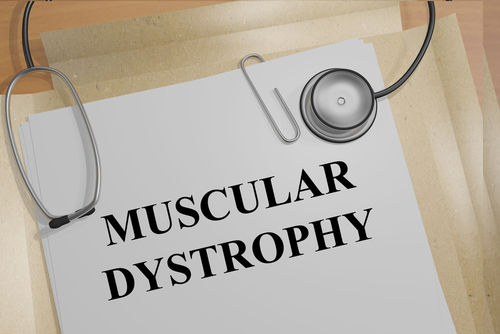New 3D Structure of Muscle with Fibrosis Could Lead to Therapies for MD, Other Diseases

Researchers recently created a 3D image of the structure and composition of the skeletal muscle, including muscle affected by fibrosis, using multiple imaging techniques coupled with quantitative stereology.
The study from a research team at UC San Diego and the Rehabilitation Institute of Chicago, titled “High-resolution three-dimensional reconstruction of fibrotic skeletal muscle extracellular matrix,” was published in The Journal of Physiology.
In the United Kingdom, an estimated of 8 million people have muscular diseases and injuries, such as muscular dystrophy (MD), which results in increasing weakness of the skeletal muscles over time.
Fibrosis is a common process that occurs in many muscle diseases, including MD, and is often measured through the increase in muscle extracellular matrix (ECM) collagen, the protein found in the connective tissue. During the fibrosis process, injured muscle undergoes a recovery process, which results in muscle pain and weakness.
Although many advances have been made in understanding muscle diseases, the structure and organization of ECM and how it affects muscle disease like MD are still unclear.
In this study, researchers used several 3D imaging microscopy methods, coupled with quantification of collagen-producing cells using stereology, to gain a better understanding of the structure and composition of muscle ECM. A mouse model with skeletal muscle fibrosis was used to simulate the effect experienced in patients with diseases such as muscular dystrophy.
They found that ECM is made of long collagen cables which increase in numbers when the muscle is affected by disease or injury. Collagen was not previously known to produce long cables in muscle.
“The first time we looked at the 3D imaging results we were surprised — the collagen structures that we saw did not fit the textbook definition of muscle,” Allison Gillies, first author of the study, said in a press release.
Researchers also discovered that the number of collagen-producing cells increase as the number of collagen cables increase, which leads to stiffness of the muscle.
“These results demonstrate that the muscle ECM is more highly organized than previously reported. Therapeutic strategies for skeletal muscle fibrosis should consider the organization of the ECM to target the structures and cells contributing to fibrotic muscle function,” the authors wrote in their study.
“Reducing the amount of collagen cables or collagen producing cells in fibrotic muscle may improve muscle function and reduce pain, even obviating the need for corrective surgery,” the study’s senior author Richard Lieber said.






